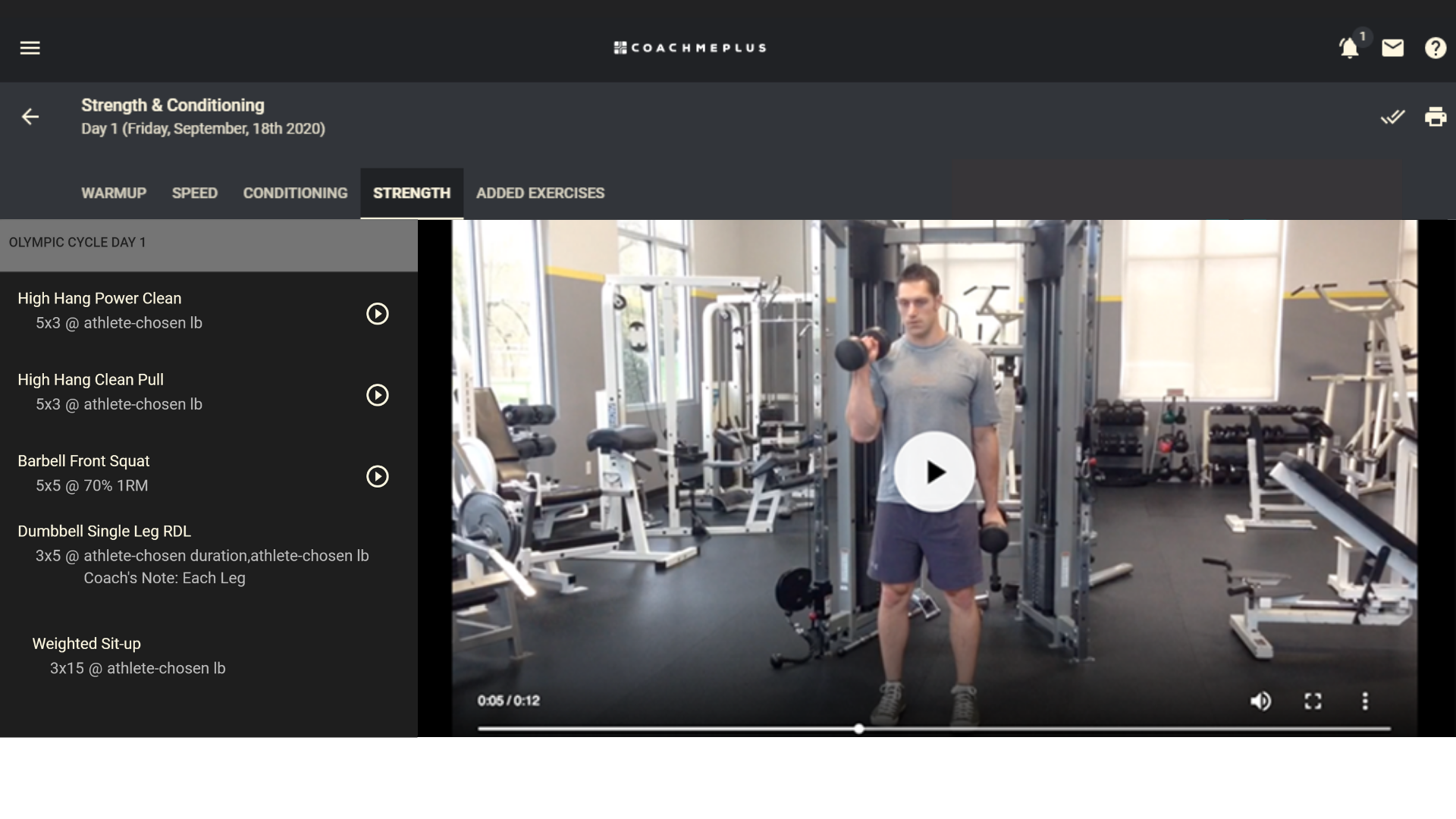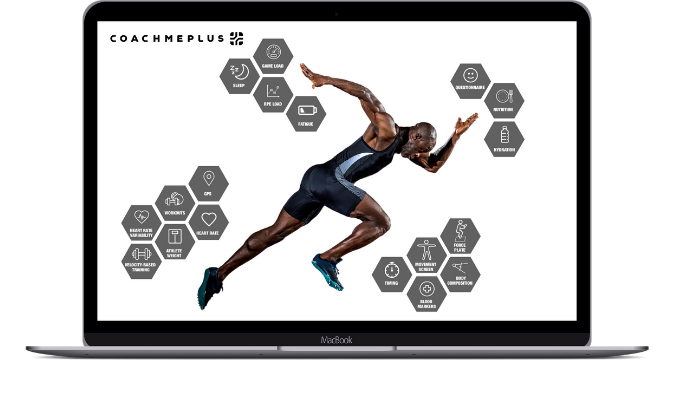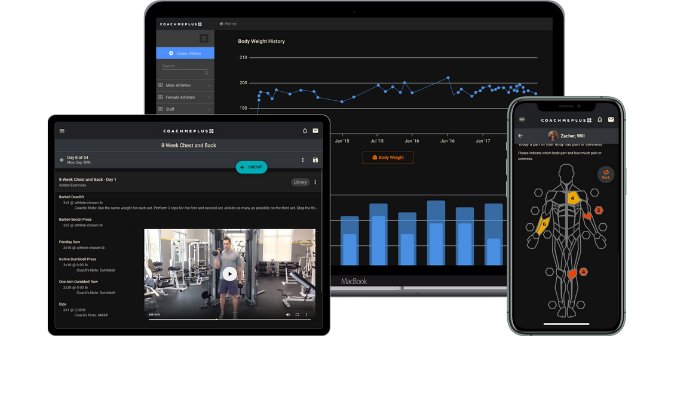Online strength and conditioning software leverage all of the timeless principles of strength training while adding an array of benefits for coaches. Today, the adoption of online training apps is still slow, with only a fraction of coaches using designated strength software to design training. Within this Academy Guide, the five essential advantages of specific training software are outlined in full detail, including relevant examples of the software’s benefits. The purpose of this article is very straightforward: Coaches can improve their results and save valuable time by migrating from spreadsheet software to actual training software. Coaches have found success while using applications not designed for writing training programs, but there are too many advantages with a modern platform to just keep using general software.

Cloud Collaboration
We can argue over software’s most important quality, but ethically, we need to first recognize the advantage of being able to collaborate with other coaches, and with the athletes themselves. Web cloud applications are perfect tools for coaches who demand group collaboration or transparency with medical and team staff. In addition to designing workouts, subjective questionnaires and other athlete inputs such as workout data are a collaborative effort, even if the training was designed by a coach. Online software enables coaches to design and push workouts anywhere in the world and see real-time training updates even when the athletes are remote. Correspondence training can be done with conventional approaches, but the speed of adjusting and communicating with cloud tools improves the quality of the training.
Collaboration is also a perfect teaching opportunity for mentored coaches. With online software, experienced coaches can help guide younger coaches in their training programs. If necessary, a head coach can intervene with an assistant by making the actual changes themselves or recommending changes through annotated notes or suggestions. Online software has many advantages, but working with other coaches and athletes is the prime benefit that must be utilized in modern strength and conditioning.

Powerful Automation
Automation improves accuracy and saves hours for coaches. One of the bottlenecks for coaches is writing workouts, as it’s time-consuming and usually very inefficient. Automation solves the need of repeating a process that may otherwise take away from other more important coaching duties. Relying on general templates from past years is convenient, but missing out on individualizing training is unacceptable and adjusting to unexpected events such as illness or a change in circumstances is necessary today. Coaches who want to provide the best training possible should reconsider how they use automation with their training programs.
Common uses for automation range anywhere from repurposing small training units with sets and reps to fully automating workouts using logic codes similar to formulas. Calculations, such as load percentages or volume estimates of work, are easily performed with the right software. Coaches can also improve communication with pre-constructed reminders and message recommendations for athletes via direct notification or by texting directly. Other approaches to automation are a combination of manual input and additional software analysis, such as wellness questionnaires and subjective ratings of effort. If the process is carefully implemented, error reduction and detection will improve, lowering the risk of injury and overtraining.
The complexity of training a large number of athletes is a major undertaking for a strength and conditioning coach. Beyond training, monitoring and return-to-play rehabilitation responsibilities are time drains that increase burnout and decrease access to personal life balance and continuing education. As the training process gathers increasing amounts of information and the role expands, strength and conditioning coaches must consider the value of automation that improves their job quality. Automation doesn’t necessarily mean artificial intelligence, so coaches can automate their training with their own methods and philosophies and not worry that the process is sterile or lacking in-the-trenches experience.

Efficient Personalization
Tailoring workouts for each athlete takes time. The energy of group training is extremely valuable for group training, but each athlete deserves and can benefit from personalized or individualized training programs. Unfortunately, creating each individual workout is very time-consuming, and coaches find themselves in a very difficult dilemma: Do they individualize a training program more or do they attend to other matters such as administrative duties or outside learning? Online strength and conditioning software is very effective in scaling workouts by copying a template or set of routines, and personalizing training is light years faster with the right tools.
The necessary amount of workout personalization or customization is based upon the needs of the athlete and the available resources of the program. It doesn’t make sense to tailor workouts too much if the coach is unable to administer to the differences between athletes effectively. A very clear example is different exercises used in training at concurrent times, when a coach needs to be in two places at once. Also, coaches may want to take advantage of team chemistry by training athletes similarly for competition or support, as athletes who train together tend to grow their commitment to one another when they experience the same trials and tribulations.

Device Integration
Coaches are increasing their use of sports technology to train and test athletes. Enormous amounts of data are pouring into athlete management systems, eventually leading to decision-making for training in the weight room. Using a strength and conditioning software product without device integration leads to a high amount of time lost to importing and editing on separate products. Leveraging hardware improves the accuracy and precision of training and testing data, and automation from an API radically alters the time invested in sorting and analyzing the information collected. Without a universal importer, coaches will have to spend too much time on the manual editing of files.
Device integration is more than just having data conveniently imported into the software—integration is also understanding the data file formats and units of measurement. A list of metrics without the right formatting is a serious liability to athletes, as it may guide a practitioner in the wrong direction. A software solution must be familiar with the relative sport science of hardware data and be on top of firmware changes that may render data incompatible. A report using an old hardware version could cause calculations to produce errors and inaccuracies, so professionals need to be familiar with creating conversion formulas or know how to interpret data sets that use different devices. Sport technology is expanding and becoming more accessible, and managing the data requires a robust platform and content maintenance by the providers of the software.

Rapid Documentation
The last advantage of a complete strength and conditioning software program is its reporting and record-keeping. While similar, the major difference between a record and a report is how the data is stored and presented. Reports are usually designed for external eyes, meaning those who may not be familiar with the data collected. Records are primarily just raw information organized properly in an archive that is easily accessible to qualified internal staff. The value of documentation is higher now than ever before, as politics and legal oversight both increase in sport. Referencing and accessing information, be it data or written notes, is standard today.
The best practices for creating a report include brevity and clarity for pertinent data. The most requested characteristics of a report are: fit it on one page, include necessary details that are relative to the summary, and obey the principles of proper data visualization. A report should be an honest act of information sharing, and bias and excessive filtering only impair the process of making the right decisions later. Thus, a report should share the outcome and possible causes that influence the results, not just be a summary without context. Reports should be clear and simple enough that staff in different departments and with all levels of expertise can easily draw conclusions. Software, if developed properly, enables coaches and medical staff to quickly generate a proper depiction of an event or period of time.
Records, or stored information from staff and athletes, can have analysis and summaries if needed. Having organized raw data accessible is also important, because filtered or missing information can mislead the professional. In addition to raw data, information should be backed up in different formats and have encryption if necessary. Finally, protection and security should be seen as a priority. Sensitive information and athlete privacy require etiquette beyond just password production. Everyone using the software should have an acceptable use policy or similar, as security goes beyond hacking—it’s about having a plan for what to do if a breach occurs.
Build on Tradition by Using the Future
The inclusion of software should not be seen as a burden; it should be seen as a solution to the demands of the profession. Modern software doesn’t replace the principles of training, it empowers the practice and reduces time and error when designing workouts. Coaches will find themselves at a crossroads and must convert or lose out on the potential benefits of collaboration, automation, personalization, integration, and documentation. Using software isn’t a restriction like it was in the past, and now workouts can be designed and adjusted faster than ever. Coaches will liberate themselves from unnecessary rote work and improve their training outcomes when they harness the advances of technology.

CoachMePlus is a comprehensive solution for any training environment, ranging from scholastic level to pros, and including both military and private facilities.

Recent Comments